Patience Chihomvu pitched her postdoctoral project proposal to pharmaceutical firm AstraZeneca in Gothenburg, Sweden, in 2022.Credit: Andy Dunbar/The Burstproof Bubble
Completing a postdoc at a company wasn’t always on the radar for Patience Chihomvu. But in 2021, the biotechnologist and recent PhD graduate was facing an all-too-common issue: how to fund her research.
Chihomvu had accepted a postdoc position at the University of the Witwatersrand in Johannesburg, South Africa. Her plan was to search for potential therapeutic compounds in the traditional medicinal plants that her father, a resident of rural Zimbabwe, had taken while recovering from COVID-19.
In doing so, Chihomvu hoped to find new treatments for asthma and other conditions such as long COVID. But the academic laboratory she intended to work in didn’t have the means to fully support her work. “There are a lot of hurdles you need to cross, especially here in Africa,” she explains. “The competition is very, very tough.”
In 2022, Chihomvu applied to join the AstraZeneca R&D Postdoctoral Challenge, a competition, hosted by the pharmaceutical firm, that promised winners at least two years of project funding and support. Winners retain ownership of their original idea, but any development of intellectual property during their postdoc could be jointly owned with AstraZeneca. Later that year, she was one of six finalists flown to the company’s research centre in Gothenburg, Sweden, to pitch her research in person to a panel of judges from various research institutions.
The career insights I’m bringing back to academia after a year at Google
During their visit, the finalists toured AstraZeneca’s facility. After years in academia, having to wait for supplies to be delivered to her PhD lab at Vaal University of Technology in Vanderbijlpark, South Africa, “I was blown away by everything”, she recalls. “I felt like I’d died and gone to science heaven.”
In the end, AstraZeneca funded all six finalists’ research. A chance at science heaven might seem rare, but this kind of model, which blends academic ideas with industrial resources, isn’t unique. AstraZeneca’s contest is one example of a temporary, industry-based position that allows academic scientists to get a taste of working at a company, which is, after all, the type of employer that many PhD holders will ultimately have.
This glimpse of industry isn’t just restricted to the post-PhD stage: around the world, institutions are offering PhD programmes that — through internships or company-funded projects — straddle the line between academia and industry. The potential of these industry-based PhD and postdoc positions to bridge the gap between university research and commercial products has led some countries, such as Australia, to invest heavily in their development.
Those who participate in these hybrid positions gain new ways of thinking and career options beyond academia. “This is a life-changing opportunity for me,” says Chihomvu.
Switching destinations
PhD and postdoc positions that combine academia and industry aren’t new. But their prevalence varies widely between disciplines, institutions and nations.
At German technical universities, graduate programmes in which companies help to fund some or all of a student’s research are “very common”, says Hans-Joachim Bungartz, a computer scientist and dean of computation, information and technology at the Technical University of Munich in Germany. These arrangements are a by-product of these institutions’ mandates, most of which date back to the nineteenth century, to produce an engineering workforce rather than “to produce Nobel prize” wins, he says. Today, the programmes remain popular among PhD candidates as a way of getting acquainted with future employers — and are a way for companies to recruit talent while expanding their research capabilities.
However, it’s relatively rare for PhD programmes in the United States — the country that produces the most PhDs in the world — to include any elements of industry, says Fan Yang, a bioengineer and co-director of the US National Institutes of Health (NIH) biotechnology training programme at Stanford University in California.
In the United States, earning a PhD in science, technology, engineering and mathematics (STEM) has historically been viewed as a launch pad into academia. As such, PhD programmes mostly train students in the skills they will need for a lifetime in an academic lab — including running experiments, securing grants and writing papers.
Why industry internships can be your ‘golden ticket’ to a prosperous career
But this “monk-like existence does not prepare you for the careers that PhD graduates are actually having”, says David Madigan, provost and senior vice-president for academic affairs at Northeastern University in Boston, Massachusetts. The percentage of US PhDs who move on to academic positions has been shrinking drastically.
In the 1990s and early 2000s, at least 49% of US PhD graduates had academic positions lined up after their thesis defence. In 2020, the percentage of PhD graduates headed into industry or business (40%) surpassed the figure for academia (39.6%) for the first time in US history. And as of 2021 — the most recent year for which survey data are available — just 35.9% of recent PhD graduates had academic jobs lined up after graduation, compared with 43.2% heading into industry or business (others were bound for jobs in government or the non-profit sector).
This changing landscape has forced some universities to reconsider what skills and experiences higher education should offer. As a result, a handful of US institutions are experimenting with programmes that introduce students to industry earlier in their careers — often through internships.
The industry internship
If there’s one thing Northeastern University is known for, it’s that its students are required to spend entire semesters not going to class. Undergraduates alternate semesters attending university and working full time, the idea being that this real-world experience gives Northeastern graduates an edge in the job market.
Although the university’s master’s and PhD students are not required to spend time working outside academia, they can opt to do so. In 2019, the school launched a programme to help doctoral students to get internships at government agencies, non-profit bodies or companies while earning their degree.
This voluntary programme was born, in part, out of the “growing realization that a PhD is no longer training to be a professor”, says Madigan, who helps to run the initiative. Internships can provide a sneak peek at the private sector, the various job opportunities there and how the skills gained in graduate school can be leveraged in the job market, he says.
Spending time outside academia provides early-career researchers with other benefits, too. In 2022, chemical engineer Xiangkun (Elvis) Cao interviewed five scientists who’d sought out company internships during their time in graduate school (Z. F. M. Burton & X. E. Cao Matter 5, 4100–4104; 2022).
Graduate students reported that internships helped them establish ties to industry, gain new skills and kept them motivated. As one interviewee told Cao: “An internship may be one of the most useful classes you take in grad school.”
Elvis Cao says all PhD students can benefit from doing industry internships during their training.Credit: Xu Liu
In some fields of study — such as computer science, where most students expect to get jobs outside academia — doing an internship while earning a degree is the norm. But this isn’t the case for other disciplines. In addition, convincing a PhD supervisor to allow students to spend time away from their thesis research, potentially for months at a stretch, can be challenging in fields that don’t have a culture of internships, says Cao, now a postdoc at the Massachusetts Institute of Technology in Cambridge.
Creating a formal internship programme can make it easier for graduate students to persuade their advisers to let them take leave. Or better yet, the internship can be mandatory: Stanford’s NIH biotechnology PhD programme requires each student to complete a three-to six-month internship.
The programme directors chose the requirement because most of their students plan to have a career outside academia, says Yang. Work experience at technology start-ups or major companies in nearby Silicon Valley makes students more attractive to future employers, she says.
“It really helps them have a smoother transition to the real world,” adds Yang. It’s also a big draw for prospective students. Melissa Nakamoto, a fifth-year PhD student in the programme, says that the internship requirement was a big reason why she chose to apply.
“I’ve always thought that I would want to work in industry, but it’s hard to know for sure when I’ve really only worked in academic labs,” she says. Nakamoto worried that a conventional PhD programme wouldn’t give her the time and space to test the waters at an industry internship.
Melissa Nakamoto chose the biotechnology PhD programme at Stanford University because it requires an industry internship.Credit: Aofei Liu
She spent last summer working on a microscopy project for the biotechnology company Amgen in San Francisco, California. Although some of her peers came out of their internships feeling like a small cog in a large money-making machine, her experience felt similar to academia, she says.
“I was still able to do discovery science, but it was more streamlined because I had my own hood, my own microscope and all the chemicals I needed right there without having to worry about whether I had the budget for it,” she adds.
The pool of US PhD programmes that include internships remains small, but more could be on the horizon. Sara Wadia Fascetti, vice provost for the PhD network at Northeastern, says that since the university launched its internship programme in 2019, around half a dozen institutions have asked for advice on how to set up their own system.
Nakamoto thinks it’s too soon to tell whether her internship will guarantee a job after she defends her thesis. “I do think that adding those skills on my résumé makes me a lot more attractive as a candidate,” she says. “Doing an internship opened my eyes to what’s out there.”
On company time
Of course, internships aren’t the only route for people to integrate elements of industry into their academic research. Some early-career researchers have company involvement baked into their PhD from the start.
That’s the case for a handful of PhD students at CERN, Europe’s particle physics laboratory near Geneva, Switzerland. In 2001, CERN created an initiative called openlab to increase collaborations with industry. In recent years, openlab has trained PhD students who split their time between coursework, research and working with an external company.
These students earn their doctorate through a partner university but spend up to 36 months physically working at CERN, while also collaborating with companies.
One of them is Kristina Jarůšková. For her PhD research at the Czech Technical University in Prague, she works with technology companies IBM and Intel to simulate particle interactions inside CERN’s Large Hadron Collider. “Right now, private companies have the most resources in terms of data, people and computing,” she says. She has the opportunity to access these vast resources while also working with leading experts on deep learning and artificial intelligence — most of whom are scooped up by tech giants.
Getting these projects up and running wasn’t smooth sailing, says Alberto di Meglio, who was head of openlab until earlier this year. Firms were initially hesitant to share anything with students that might count as a trade secret.
“For some students, the experience at the company was not that great because they were parked just outside of the main lab and fed the minimum amount of information,” says di Meglio.
To work around these issues, openlab had students sign a non-disclosure agreement in advance. Today, industry-partnered PhDs are well established in the information-technology side of CERN, says di Meglio.
For companies, sponsoring these joint projects can yield the benefit of eventually hiring CERN-trained students who are well versed in the firms’ culture and technology, for the small price of US$50,000–60,000 a year, he says. Both the lab and students have also reaped the rewards of these collaborations — including the development of CERN’s specialized software. The programme has been so successful in terms of research quality and student motivation “that we decided we would do this kind of PhD [any time] the opportunity arises”, adds di Meglio.
Leaving academia for industry? Here’s how to handle salary negotiations
And some countries, such as Australia, want to make industry-partnered PhDs even more common. Many Australian PhD programmes have been offering connections between industry and academia — often with students agreeing ahead of time to work on a project that interests a company. But these types of partnership made up only around 10% of the total PhD cohort, historically. In 2022, the Australian government announced that it would invest Aus$296 million (US$198 million) to support 1,800 new industry-connected PhDs in the following 10 years.
The move is part of a larger push to bridge the ‘valley of death’ between academic research and business, where promising basic research often fails to get picked up and commercialized by private companies, says Deborah Terry, vice-chancellor and president of the University of Queensland in Brisbane, Australia. Terry worked on the government report that outlined how university research could benefit the economy, including through industry PhDs.
Industry PhDs can also help students to chart a career course into the private sector after graduate school, says Zainab Mustafa, a process engineer at the engineering and consulting company Jacobs in Sydney, Australia.
In 2018, Mustafa was one of the first students to do a chemical-engineering industry-linked PhD at the University of New South Wales in Sydney. Mustafa hadn’t originally intended to seek a PhD. But she was intrigued by the chance to work in a university lab and also have contacts at the chemical company DuPont and at the Commonwealth Scientific and Industrial Research Organisation (CSIRO), the Australian government’s science research agency.
After her industry-linked PhD, Zainab Mustafa landed an engineering consultancy job.Credit: Zainab Mustafa
Working out how to straddle all three worlds wasn’t easy. Mustafa spent the first year of her PhD focusing mainly on industry projects, before realizing that she would need to run experiments that she could submit for a PhD thesis. Looking back, Mustafa says a more structured programme might have helped. “It was still a key learning experience,” she says, adding that she received a job offer from Jacobs about six months before the end of her PhD.
Compared with PhD students working exclusively at universities, Mustafa says, “it was a lot easier for me to get employed because I had a working relationship with industry already”.
This distinguishes industry PhDs and postdocs from more-conventional academic positions. “A lot of PhD graduates feel that their research isn’t going to count towards what industry wants,” says Mustafa. “But I was able to showcase my research and say, ‘I worked with industry to solve their problems in this PhD role’.”
Around half of PhD students in Australia aspire to a career in academia, says Terry. For many in the other half, an industry-linked PhD, internship or postdoc offers what might be the most efficient way to gain skills and experience that translate to the private sector.
That’s the sense Chihomvu has about her AstraZeneca postdoc, which begins next month. Ultimately, Chihomvu plans to stay in industry because it is the best way to make an impact on society, she says. “I cannot wait to start.”




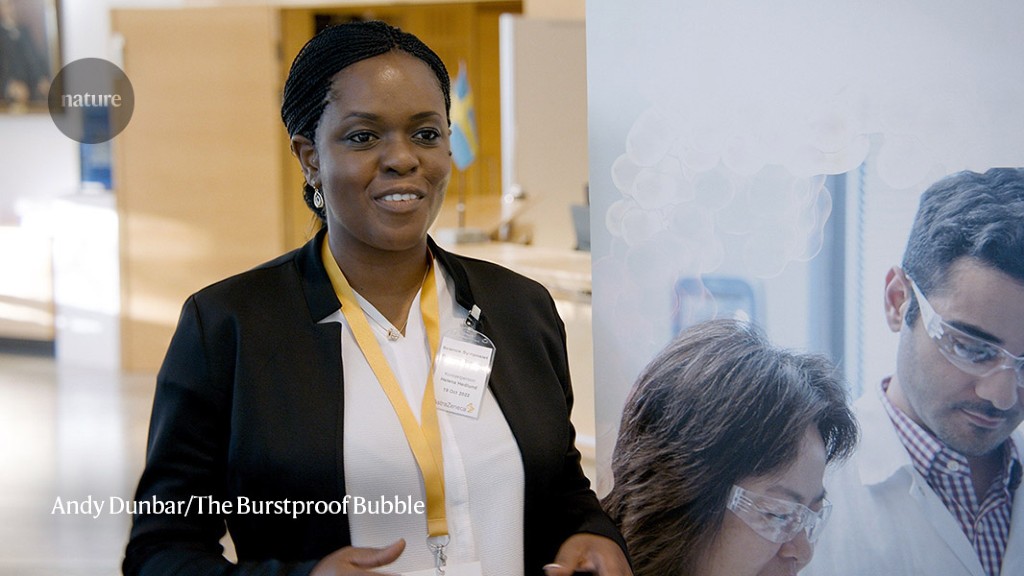
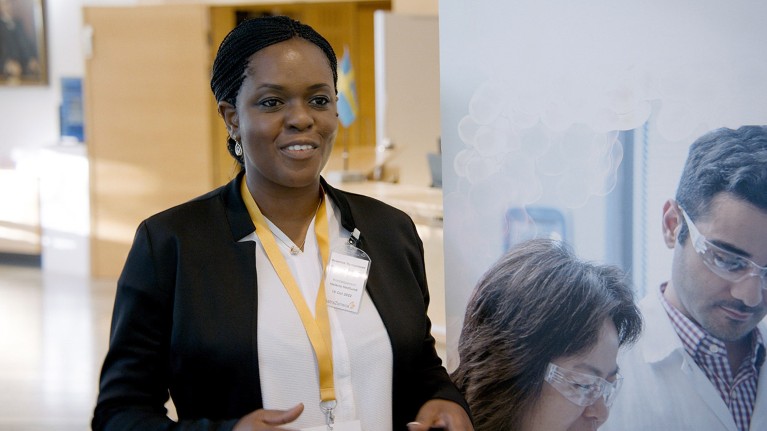

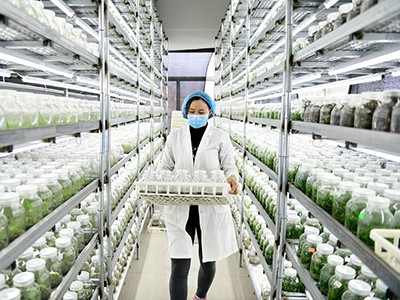

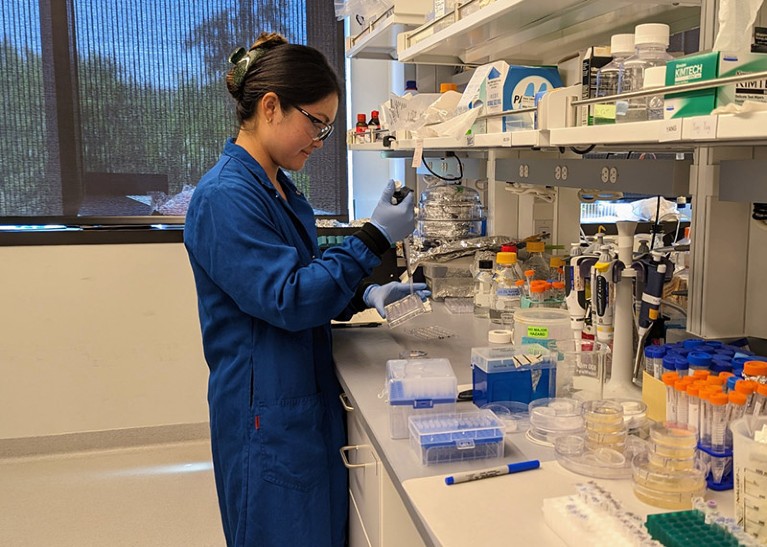

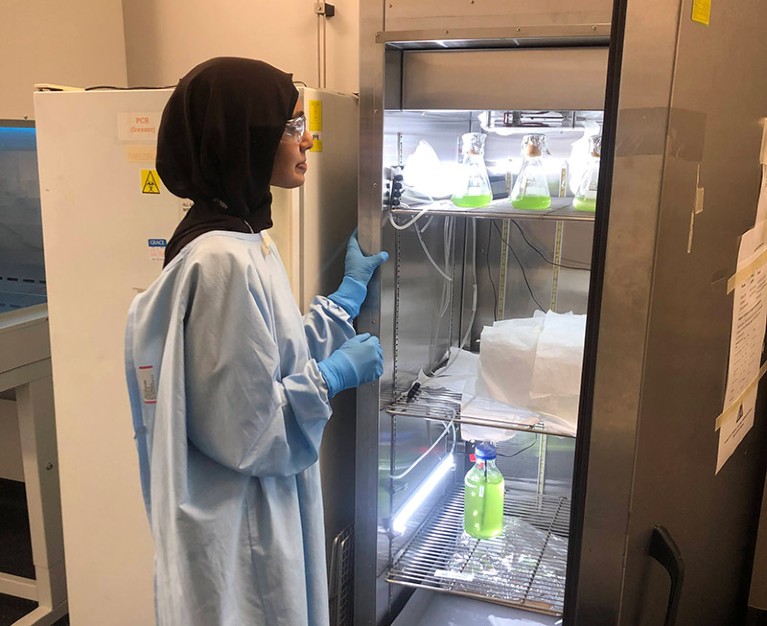
More News
Author Correction: Stepwise activation of a metabotropic glutamate receptor – Nature
Changing rainforest to plantations shifts tropical food webs
Streamlined skull helps foxes take a nosedive